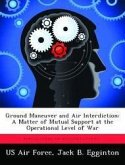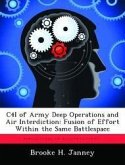This study analyzes the use of airpower against enemy ground forces. The author assesses current doctrinal definitions of the Close Air Support and Interdiction missions as seen by the Air Force and Army, comparing and contrasting the two. The essence of both services' views are very similar, the greatest differences seem to be simple semantics. Next, the writer examines a typical modern field army, analyzing the various parts of combat and support forces for criticality and vulnerability to air attack. The longest section of the study then examines the desired operational effects and tactical results. This includes the questions of enemy actions, congruence with overall strategy, and the tactical problem of finding, identifying, striking, and assessing damage to, the target. Operational level combat assessment is also discussed. The author then examines the historical development of combined arms warfare, and current Army doctrine regarding forms of maneuver, attack, and defense, highlighting areas where a particular ground scheme of maneuver is best supported by a particular air mission, or by air attack on a specific target set. The next chapter briefly reviews four case studies in attack aviation, ranging from World War One to the Vietnam War.
Hinweis: Dieser Artikel kann nur an eine deutsche Lieferadresse ausgeliefert werden.
Hinweis: Dieser Artikel kann nur an eine deutsche Lieferadresse ausgeliefert werden.







